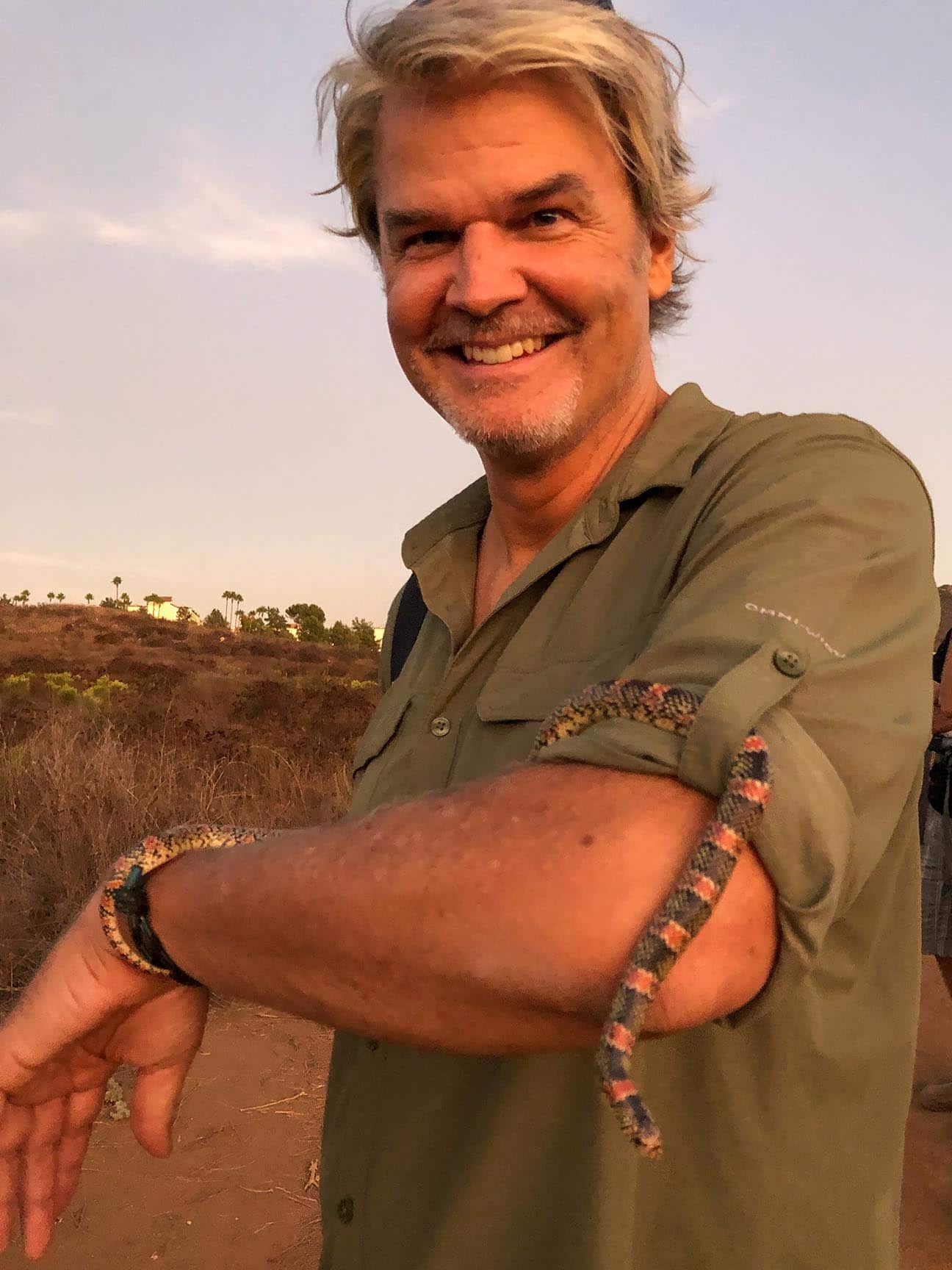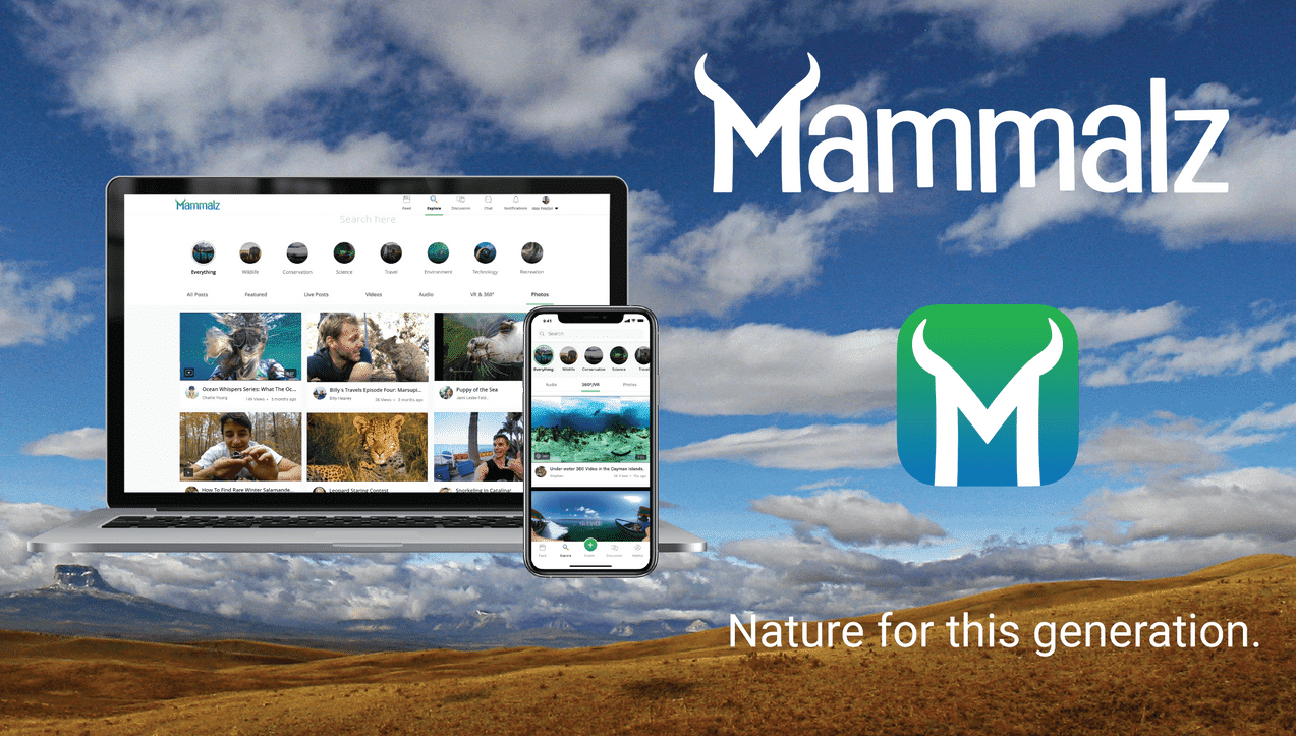Mammalz was founded because most of nature media is dominated by a single voice and perspective, and Rob felt that it was time we hear from a more diverse range of voices from around the world. He was inspired by the concept introduced by Thomas Friedman in his book Hot, Flat, and Crowded of needing 1 million Noahs and 1 million arks in order to save biodiversity on this planet. It gave him the idea that, in fact, what we need is 1 million Sir David Attenboroughs, each of them with their own diverse, beautiful, unique voice and perspective.
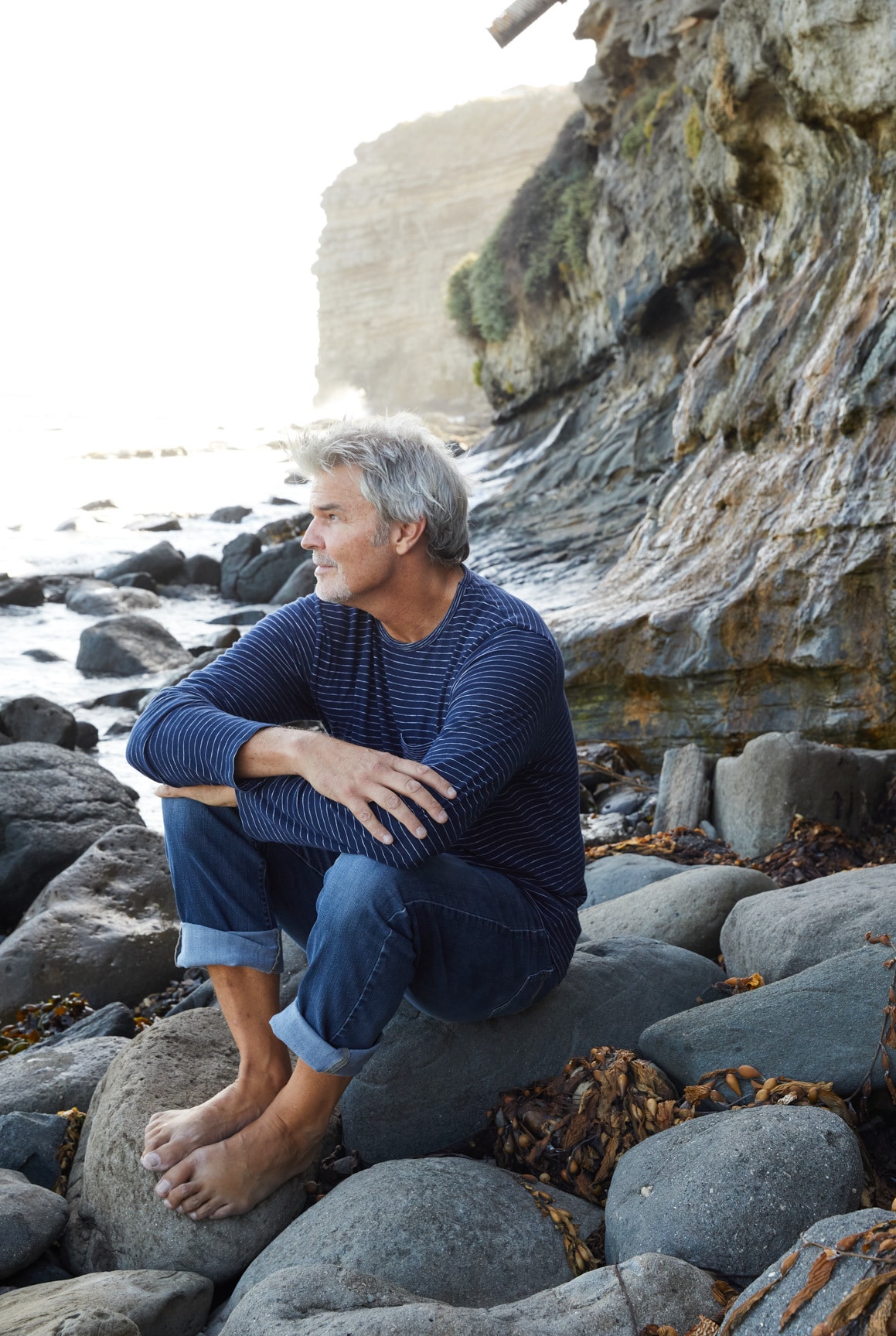
Why did you found Mammalz?
We are at a crossroads today, standing at what I think is the most defining time in our history. From species extinction, climate change, deforestation, excessive consumption, habitat destruction, and our exploitation and pollution of our oceans, we are recklessly altering our planet at a rate so great that we are putting our very existence into question. We don’t have to be doing that. We can live wonderfully productive, creative, and impactful lives AND live in complete sustainability with other life on this planet.
I had always thought that this amazing work that I was lucky enough to do was having a big impact. But, one day I wake up and realize that everything is much worse off than when I started. I thought that my work making wildlife films would have contributed to people treating the natural world with more respect and care. I thought the messages in my films would have sparked more conservation action. How is it, then, that in this age of media and information, when nature films are more popular than ever, that young people are more disconnected from nature than ever before? I started questioning the validity of what I’m doing and asked myself, “Is there a better way?”
What I found set the stage for founding Mammalz.
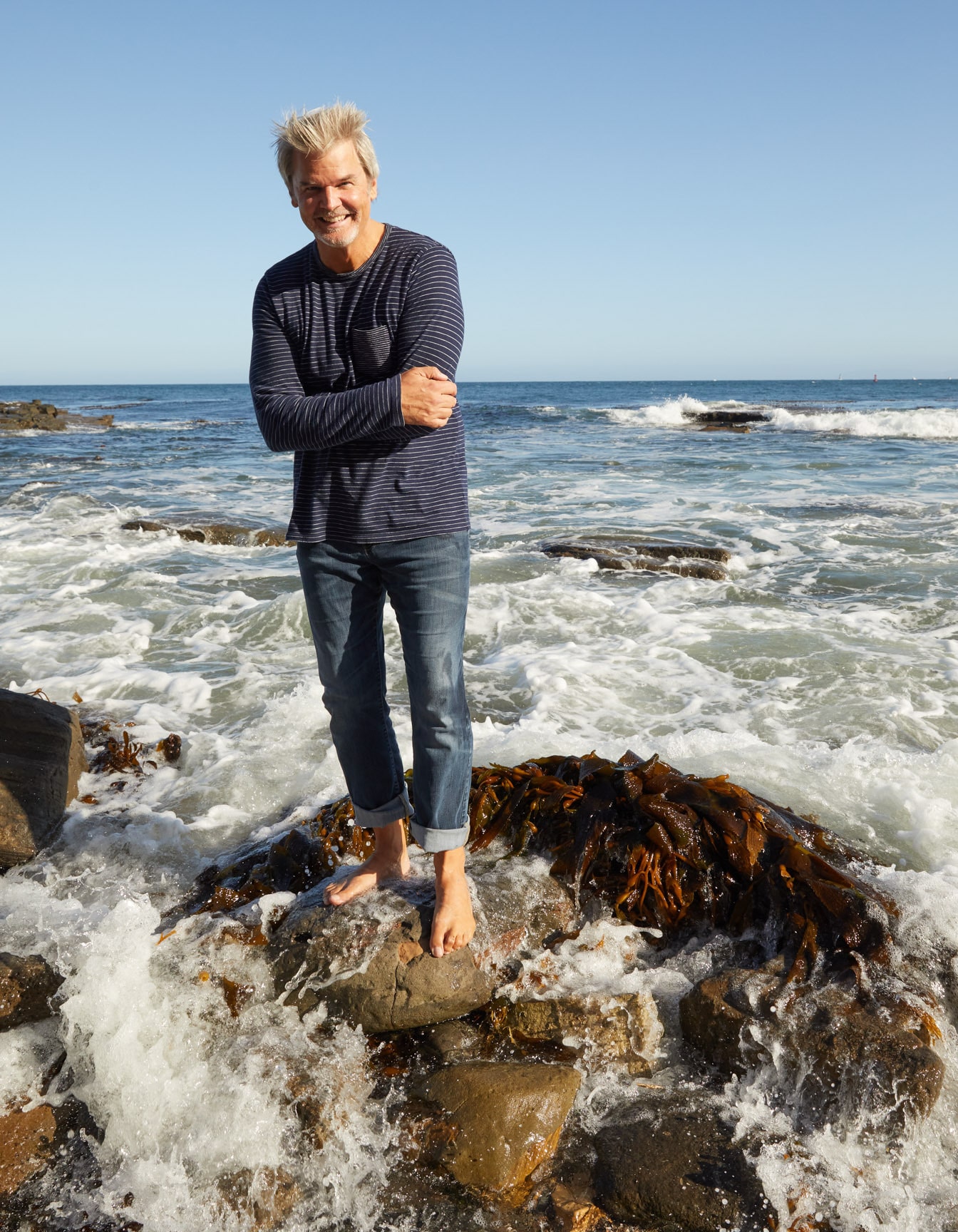
The Nature Media Industry Needs a Shake Up
First off, it isn’t the films themselves that are the problem. It’s the business model. The nature media industry does not operate on a time and scale that can keep up with how fast the world is changing and how fast we are negatively impacting the natural world. It takes 2 to 4 years from pitch to broadcast to make a wildlife film. We simply don’t have that time.
All natural history programming is almost exclusively made for broadcast TV, and TV is dead. People, especially young people, don’t watch television content anymore. That means advertising dollars have exponentially decreased, resulting in a fraction of the films being made today. Netflix isn’t really an option because they only put their money behind 1 or 2 huge productions at a time. That leaves not only industry insiders vying for limited slots, but outsiders with zero opportunity to break into the business. That leaves young creators with their only option to upload their content to YouTube or social media and hope that they can somehow break through all the noise. That noise also makes it nearly impossible for consumers to find nature content. Without viewers, there is little hope for ever being able to monetize that content; it’s simply a business model that doesn’t work.
To Re-Connect People to Nature, We Need Diverse Voices and Perspectives
Finally, most of nature media is dominated by the Western world view and most of the popular nature documentaries come from a single voice and perspective: the famous and accomplished Sir David Attenborough, age 94, who has been introducing us to nature’s amazing stories for decades. While I love him dearly for his commitment and integrity for sharing the natural world, it’s time we hear from a more diverse range of perspectives from around the globe.
And if we could make that happen, imagine the creativity that would be unleashed, the millions of untold stories of the natural world that we would be introduced to, on a platform where people from all walks of life, anywhere in the world can interact with each other and form a real sense of community, where content creators can monetize their content, and scientists can have a powerful voice in the conversation. The change that we could manifest would be profound.
Well, we are making that very thing happen. We are Mammalz, and we are on a mission to reconnect the world to nature.
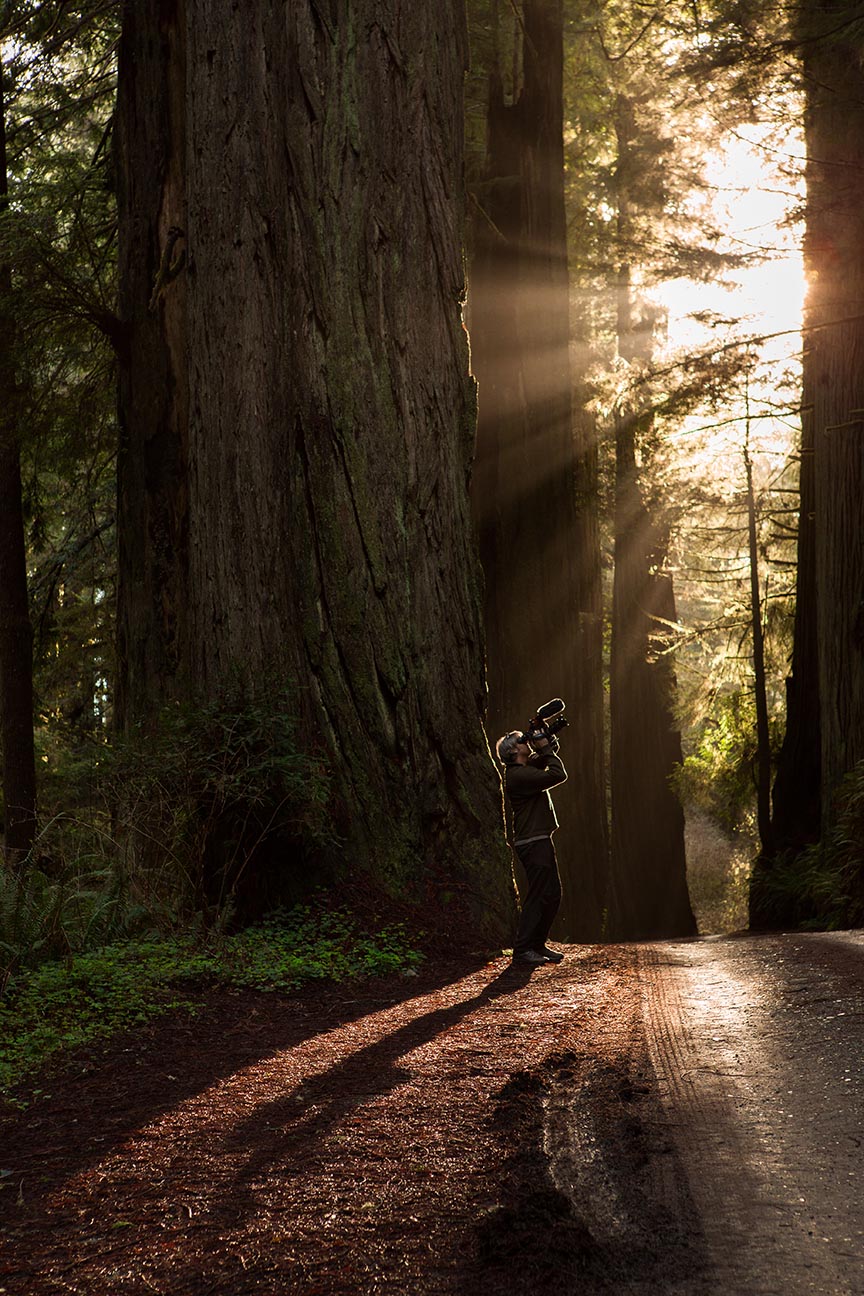
“Looking outside the nature media industry for inspiration allowed us to reimagine our industry in new and exciting ways”
What was the process of making it?
I knew this would perhaps be the hardest thing I’ve ever done. I also knew two other things. One, that I navigated a submarine for 4 years when I was in the Navy and if I can do that, I can do anything. And, that I thrived for 25 years in the wildlife film business and if I can do that, I can do anything.
My wife, Pam and I had lived in Missoula, Montana for 20 years and had an inkling that for an idea this big, we might have to make a move to a bigger city for us to make this happen but first I needed to make a plan.
The first thing I needed to do was to find a co-founder, somebody who can do everything that I can’t and somebody who brought knowledge to the table that I didn’t have. I found that in a young man, Alex Finden, a talented filmmaker who had moved to Missoula trying to break into the nature business, but was making his living managing YouTube and Twitch channels for video gamers in the gaming industry. He brought a unique insight into the way younger people not only consume media now, but interact with it and form community around it. More importantly, he introduced me to the way video gamers were monetizing their content through new community-based monetization models. Looking outside the nature media industry for inspiration allowed us to reimagine our industry in new and exciting ways. We spent months imagining then reimagining before we came up with the first workable solution.
A Platform Built Around an Interactive Community, With No Restrictions
Basically, we were turning the old Animal Planet media model into a new 21st century tech model. We were creating a platform that would consist of entirely user generated content, with no restrictions on media type, creativity, or who was telling the story, built around an interactive community, and with monetization features. It was an audacious plan which usually is when you are talking about a complete disruption of a business model. But here we were, two wildlife filmmakers. Who was going to build this?
But first, by this time, we had a clear understanding of the magnitude of what we were doing and knew that we would not be able to pull this off in a small mountain town in the northern Rockies. So we made that fateful decision to leave our beloved mountains and the community that we loved so dearly behind, and move to San Diego, CA.
Next, we set out to find tech talent to discover what it would take. That journey was part comedy and part tragedy. Comedy in that there was such an amazing disparity in the cost of developing the first iteration of Mammalz, anywhere from $80,000 up to over $3 million. Tragedy in that we came across quite a few unscrupulous developers/investors. In the end we ended up with a company based in Washington DC who made an investment in us and provided the tech talent, most of which was based in Delhi, India.
“We found our experience with the India development team to be delightful”
Despite warnings about outsourcing tech, we found our experience with the India development team to be delightful. We even traveled to India for 2 weeks of development followed by 8 days where Pam flew over to go on tiger safari with us. And yes, everyday, for 5 days on safari, we were front and center with tigers. Wild tigers.
The one thing we did not let anybody else do was design. I was adamant that all branding and design remain in house so that we would have control of it the entire time. So in the end, we designed Mammalz ourselves and Alex translated that design into the user experience we now have on Mammalz.
After 8 months of development, we had the first version of Mammalz and released it into beta. What happened then was more than we could have imagined. We immediately filled the 1000 beta testers we had planned for and over the next 8 months proved that what we set out to do was not only a viable model, but a thriving community where engagement among users was magnitudes higher than what we even thought.
Mammalz officially launched in late April, 2020.
“Community is about creating a sense of belonging, a sense of shared purpose”
How do you involve the community in Mammalz?
Community is something that I feel so strongly about. It’s something I think that social media gets all wrong. Community is more than a word. It isn’t just about connecting people. It’s about creating a sense of belonging, a sense of shared purpose, where everybody feels like they are valued, where truth means something, people are nice to one another, and diverse voices and perspectives matter.
First, Mammalz has created a community environment where people feel a sense of belonging. If you love nature, this is your home.
Secondly, we have no restrictions on who can share content and who can interact with it. We encourage all voices from around the world to contribute to the discourse.
And finally, we are building Mammalz as a community that goes beyond the “like” button. We encourage people to comment, ask questions, and engage with each other in a more meaningful way.
What we are seeing in this early stage is that people have been craving this very thing. People want to feel a sense of belonging. They want to engage with other people in meaningful dialogue. They want to be given tools to actually make a difference.
“Soon, we’ll be able to provide people the ability to donate with one easy click…a powerful tool for conservation”
The immediate future of Mammalz will see the monetization implementation where users will be able to hit the “donate” button. My entire career, people always ask how they can help, where they can put their money. It’s always been such a convoluted process to donate. Soon, for the first time, we’ll be able to provide people the ability to donate with one easy click, right at the moment when the emotion hits them and they want to do something. I believe it will be a powerful tool for conservation.
How long have you been a wildlife documentary maker?
For the last 25 years, I’ve worked in the natural history film business, either making my own films for broadcast or theatrical release, or working on other projects as producer, writer, editor, or cinematographer. It’s been a remarkable journey so far.
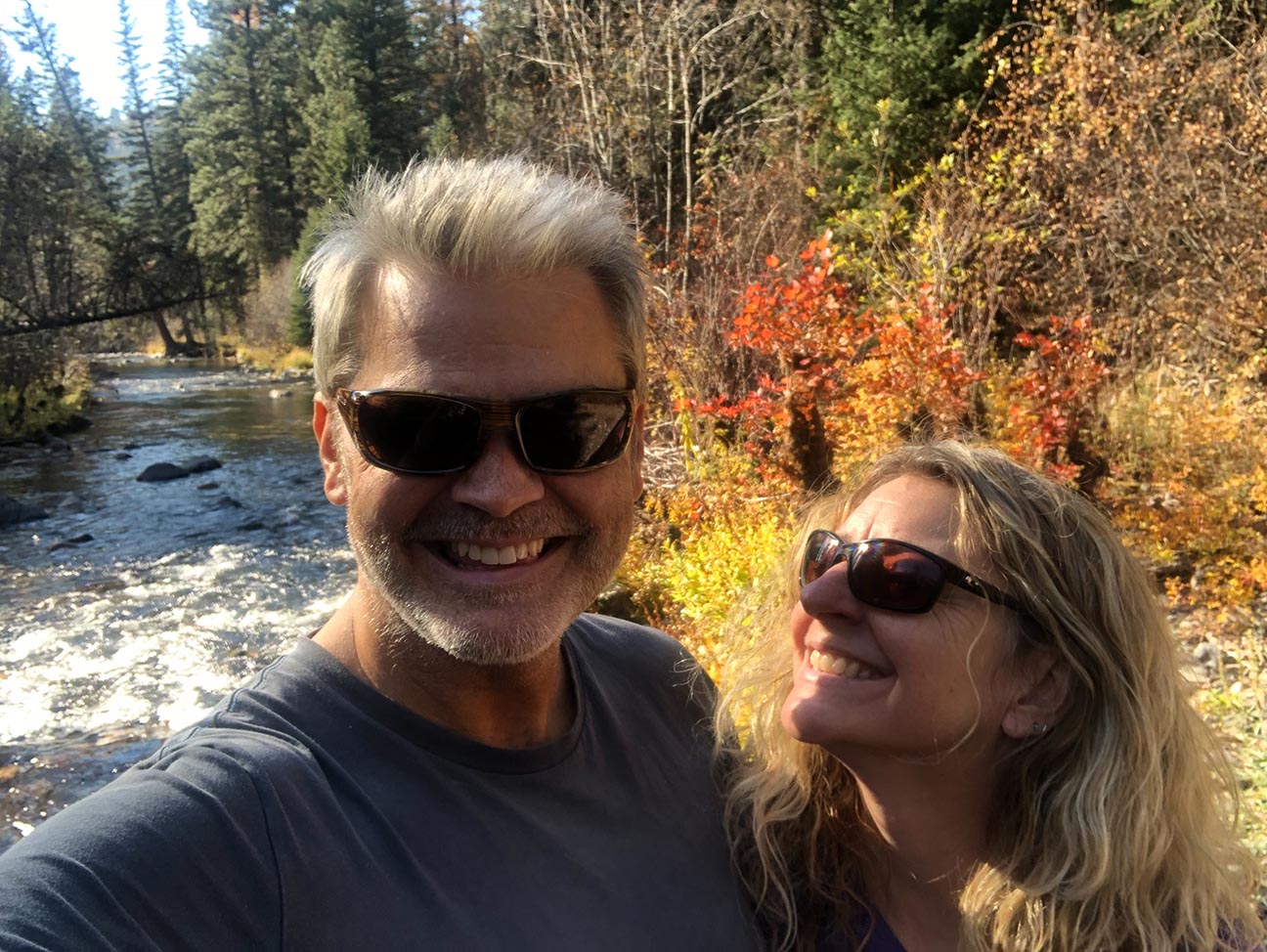
Falling in Love Over a Grizzly Bear
How did you meet your wife Pam?
It might sound crazy but Pam and I fell in love over a grizzly bear. We actually met for the first time at a wildlife film festival in Missoula, MT in 2000, and began working together shortly after. It was an unusual relationship. I was her boss, she was my landlord.
But we shared a passion for the long hours out in the wilderness tracking animals and waiting patiently to capture amazing behavior. It was a professional relationship until one fateful day in August. We were in Glacier National Park looking for grizzly bears with a friend who was an expert on the subject. We had spent a long day from sun up looking for them and had seen quite a few through our binoculars, but it was getting late and we decided to hike back to camp. That’s when a very large male grizzly stood up in front of us, assessed the situation and then moved off around us. Our friend looked back to us with a wild gleam in his eyes and said, “Yep, that’s a Griz. it’s now or never. Get your camera out.” We set up on the trail to film him and he came walking right toward us. Realizing we had nowhere to go, we stood our ground. Our buddy had two bear sprays aimed at the bear while I filmed until the bear came within 6 feet of us and I could no longer film. Knees shaking, not making eye contact, we gently talked to him, “Hey, Bear.” He huffed a couple of times, slapped his paws down, and then slowly turned to the side and walked off into the huckleberry bushes. We spent the next two hours with that bear on the mountainside, watching and filming him dig for roots, gently pick huckleberries one by one off of the bushes, and slowly amble around seemingly without a care in the world. Just prior to it getting dark, he walked away from us right up and over the mountain and into the sunset. I let out a gasp, and turned to Pam. She was staring at me with the most beautiful and magical look. We hugged for the longest time and have been together ever since.
Are you and your wife both involved?
Yes, Pam is Mammalz’ Head of Marketing. Prior to becoming a wildlife filmmaker and photographer, Pam spent 17 years in the advertising world working on both agency and client-side marketing, including producing Super Bowl commercials. So she’s come full circle now, marketing executive turned wildlife filmmaker turned marketing executive for a nature company.
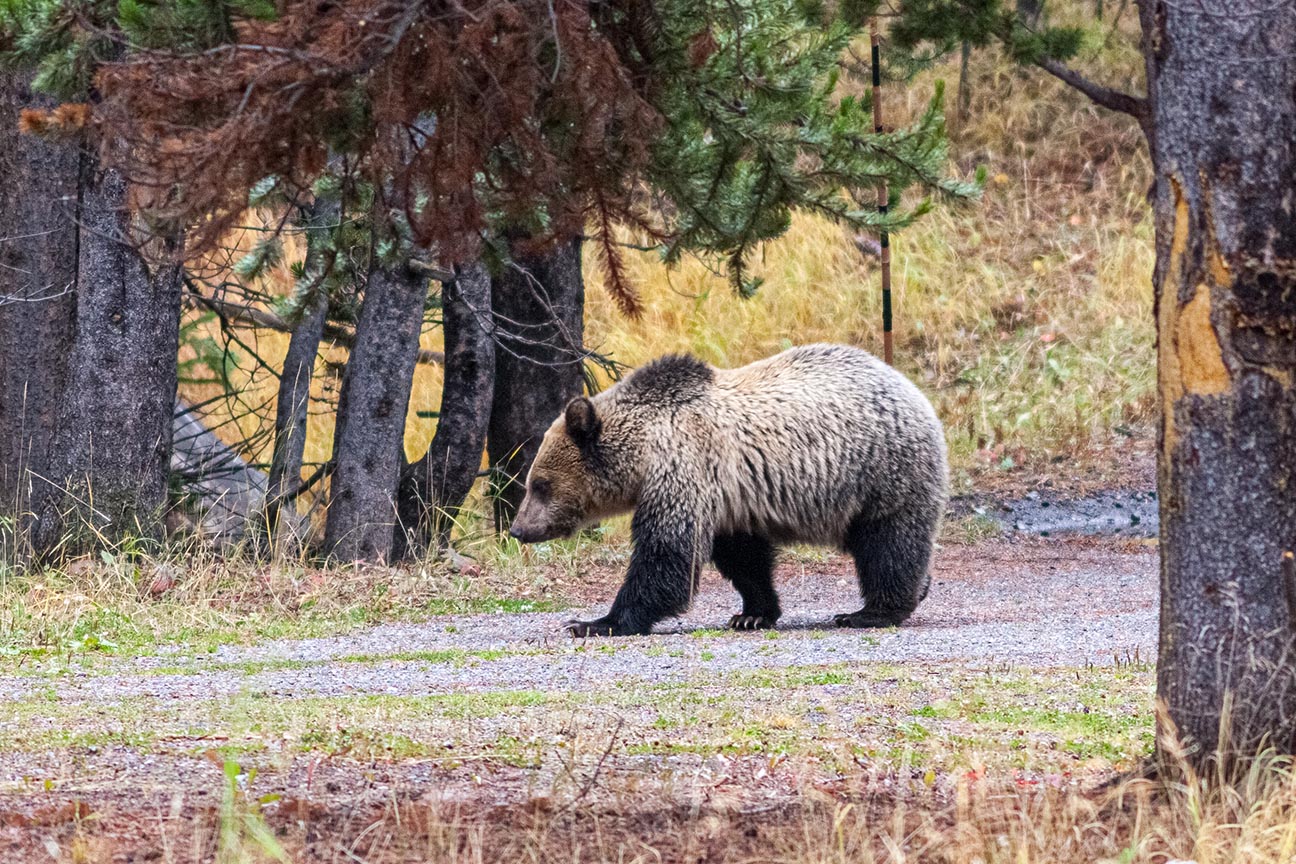
The Power and Vulnerability of the Grizzly Bear
What is your favorite animal? I understand you have met one; what was that like?
The grizzly bear. Not just for the magic of falling in love over one, but the grizzly represents the apex of life as a predator. Their power, grace, and intelligence is something otherworldly, but also their vulnerability speaks to the fragility of life on earth. We spent one summer where we filmed 27 different grizzlies all over Montana. Their behavior is pretty predictable. If you pay attention, they telegraph everything they do. They got my heart racing fast every time I encountered one, but they were a joy to be around. And, I loved living in a place where I knew I was not at the top of the food chain.
“Yoga has proven to be the most synergistic practice with wildlife filmmaking”
Doing wildlife documentary work seems physically demanding. How do you stay in shape?
Despite the romantic notion of being a wildlife filmmaker, it’s actually very physically and mentally challenging. Basically, you lug around 50 to 100 pounds of gear for miles, then you set up often under some type of cover and you wait. And wait. And wait.
Of all the workouts I’ve done, and I grew up being a workout junkie, yoga has proven to be the most synergistic practice with wildlife filmmaking. Strength, flexibility, and holding positions for a long time while controlling your breathing, translates perfectly to the demands put on your body out in the field. Although, for the last couple of years, after I broke my back snowboarding, I’ve really become obsessed with TRX. It’s so simple, but you literally can’t do it without engaging your entire body from core to limbs. I feel the functional movements for strength and balance really helped me through the long healing process.
Eating Locally and Only When Hungry
Any special diet or food plans you are on?
My relationship with food was influenced by a friend who grew up in the mountains outside of Tepic, Mexico. He never understood the American way of 3 meals a day whether you are hungry or not. He had no food schedule. He would eat when he was hungry and eat only enough to where he was not hungry anymore. He was in amazing shape. That’s not an easy thing to do. It requires a level of understanding and connection to your body that doesn’t always match up with our modern social lives and the stress and emotion that comes with it. But, I’ve tried to follow that as best I can throughout the years. The other thing that we do is try to vary our diet by eating what is in season and from as many local sources as we can. You know, what is nature providing us this season? That simple practice has really fostered a much deeper connection to the food we eat. Of course, we live in San Diego now and tacos are always in season. I love tacos.
“My greatest influences in the natural world all came to prominence as cultural icons in the second half of their life”
“Great talents ripen late,” Tao Te Ching. What does that quote mean to you?
When I was a kid, my Dad told me that nothing in life happens if you can’t visualize it. So around 10 years old, I started having this recurring vision of me standing in front of thousands of people talking. I had no idea what I was saying. All I knew is that the crowd was nodding in approval, and that I had gray hair. That’s an odd vision for a kid to have, but something about it made it very clear that I did not have to have everything figured out early on in life and that I had a life to live before I would be standing up in front of people.
My greatest influences in the natural world — Jacques Cousteau, Jane Goodall, and David Attenborough — all came to prominence as cultural icons in the second half of their life. I was always struck by their worldliness, compassion, and sense of self but more importantly, their wisdom. I feel like those qualities emerge with age. So yes, “Great talents ripen late.” If we want to make a lasting positive impact on our planet, we need more people to “ripen late” and share their great talent and wisdom with the world.
Sign up now community.mammalz.com
Main photos of Rob Whitehair by Claudia Goetzelmann for AGEIST.
The ideas expressed here are solely the opinions of the author and are not researched or verified by AGEIST LLC, or anyone associated with AGEIST LLC. This material should not be construed as medical advice or recommendation, it is for informational use only. We encourage all readers to discuss with your qualified practitioners the relevance of the application of any of these ideas to your life. The recommendations contained herein are not intended to diagnose, treat, cure or prevent any disease. You should always consult your physician or other qualified health provider before starting any new treatment or stopping any treatment that has been prescribed for you by your physician or other qualified health provider. Please call your doctor or 911 immediately if you think you may have a medical or psychiatric emergency.

